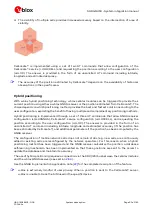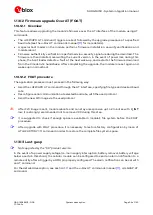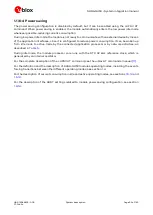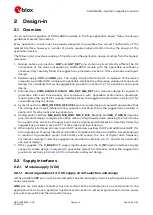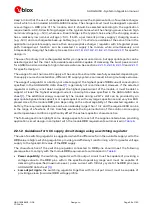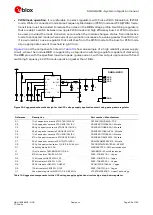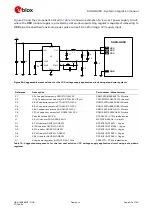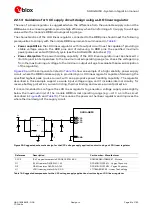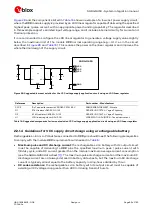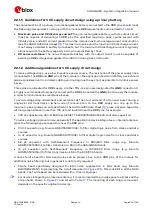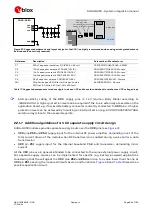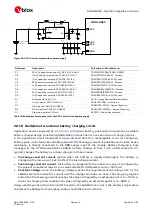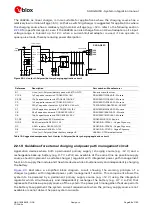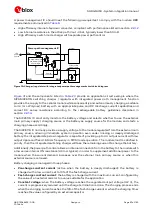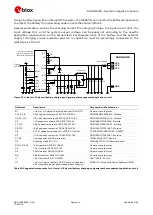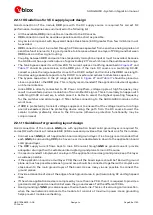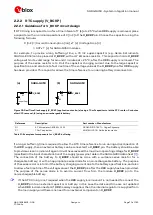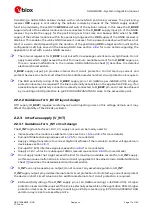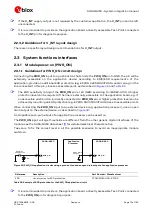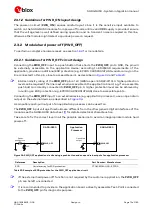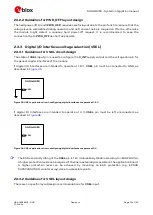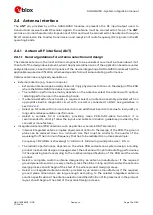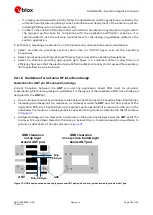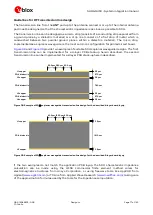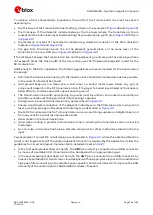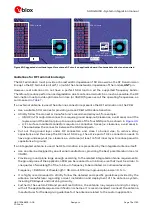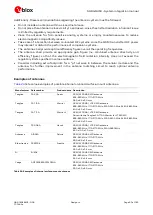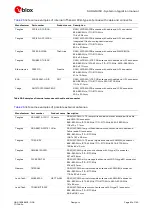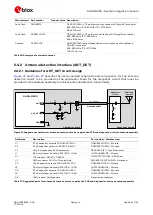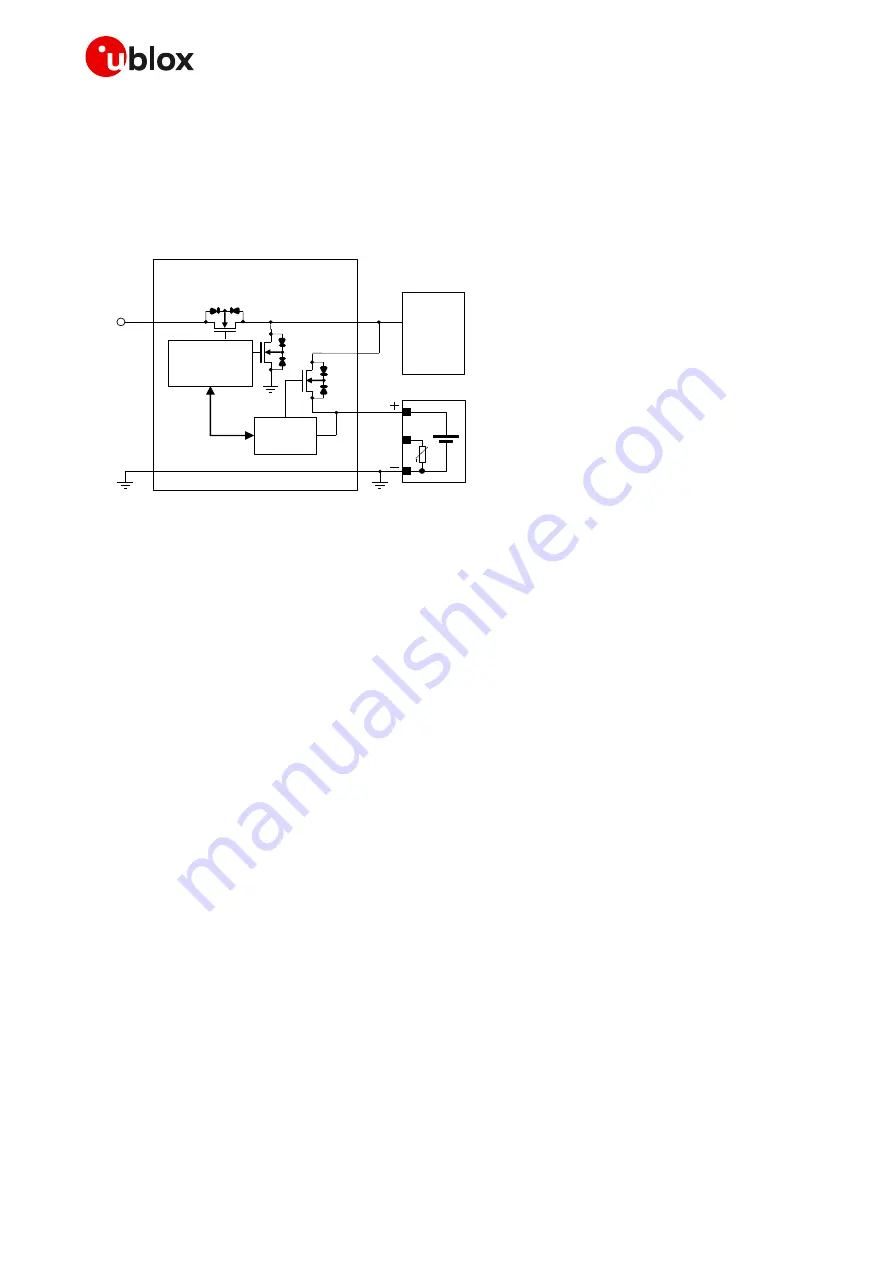
SARA-G450 - System integration manual
UBX-18046432 - R08
Design-in
Page 67 of 143
C1-Public
A power management IC should meet the following prerequisites to comply with the module VCC
requirements summarized in
High efficiency internal step down converter, compliant with performances listed in section
Low internal resistance in the active path Vout – Vbat, typically lower than 50 m
Ω
High efficiency switch mode charger with separate power path control
GND
Power path management IC
Vout
Vin
θ
Li-Ion/Li-Pol
battery pack
GND
System
12 V
primary
source
Charge
controller
DC/DC converter
and battery FET
control logic
Vbat
Figure 30: Charger / regulator with integrated power path management circuit block diagram
and the components listed in
provide an application circuit example where the
MPS MP2617H switching charger / regulator with integrated power path management function
provides the supply to the cellular module while concurrently and autonomously charging a suitable
Li-Ion (or Li-Polymer) battery with an appropriate pulse and DC discharge current capabilities and
correct DC series resistance according to the rechargeable battery guidelines described in
section
The MP2617H IC constantly monitors the battery voltage and selects whether to use the external
main primary supply / charging source or the battery as supply source for the module, and starts a
charging phase accordingly.
The MP2617H IC normally provides a supply voltage to the module regulated from the external main
primary source, allowing immediate system operation even under missing or deeply discharged
battery: the integrated step-down regulator is capable of providing up to 3 A output current with low
output ripple and fixed 1.6 MHz frequency in PWM mode operation. The module load is satisfied in
priority, then the integrated switching charger will take the remaining current to charge the battery.
Additionally, the power path control allows an internal connection from the battery to the module with
a low series internal ON resistance (40 m
typical), in order to supplement additional power to the
module when the current demand increases over the external main primary source or when this
external source is removed.
Battery charging is managed in three phases:
Pre-charge constant current (active when the battery is deeply discharged): the battery is
charged with a low current, set to 10% of the fast-charge current
Fast-charge constant current: the battery is charged with the maximum current, configured by
the value of an external resistor to a value suitable for the application
Constant voltage: when the battery voltage reaches the regulated output voltage (4.2 V), the
current is progressively reduced until the charge termination is done. The charging process ends
when the charging current reaches the 10% of the fast-charge current or when the charging timer
reaches the value configured by an external capacitor

